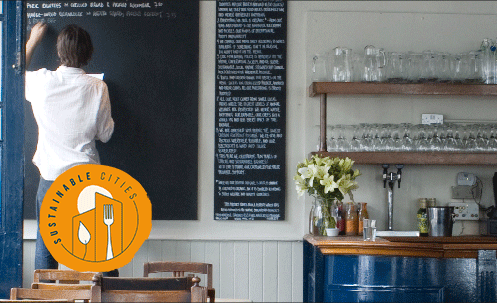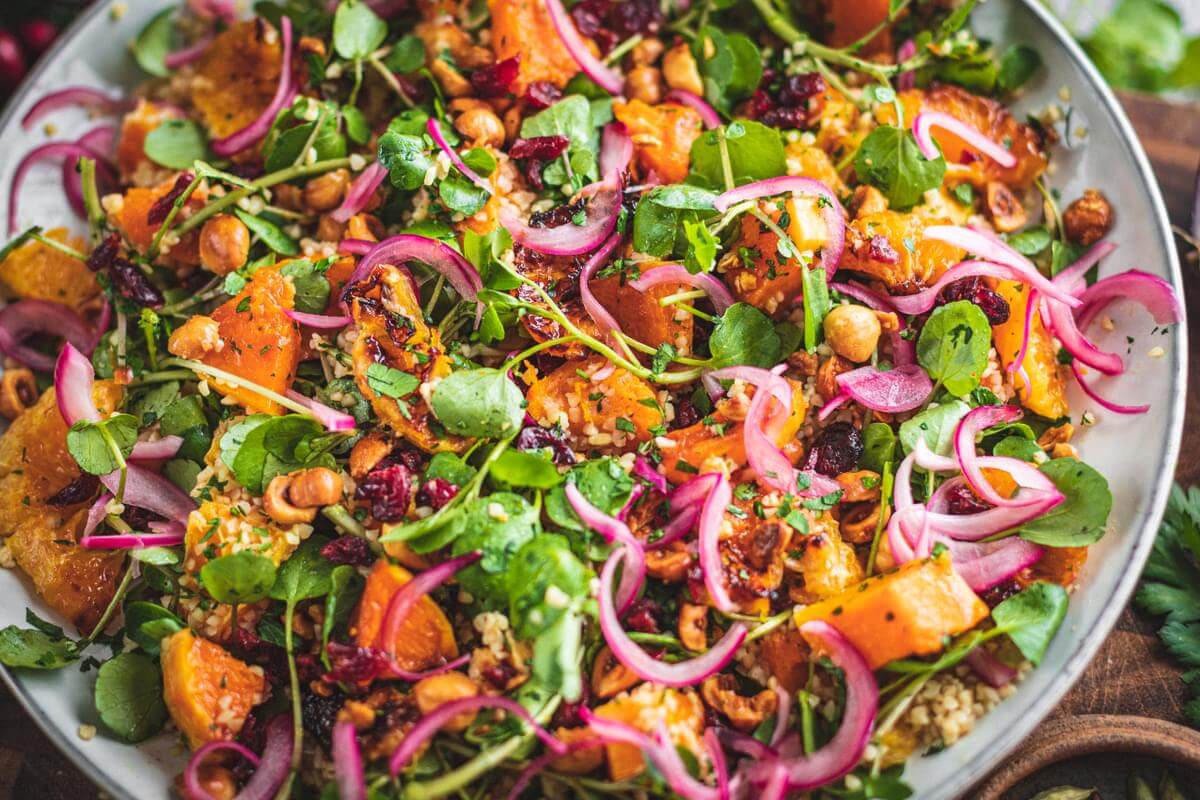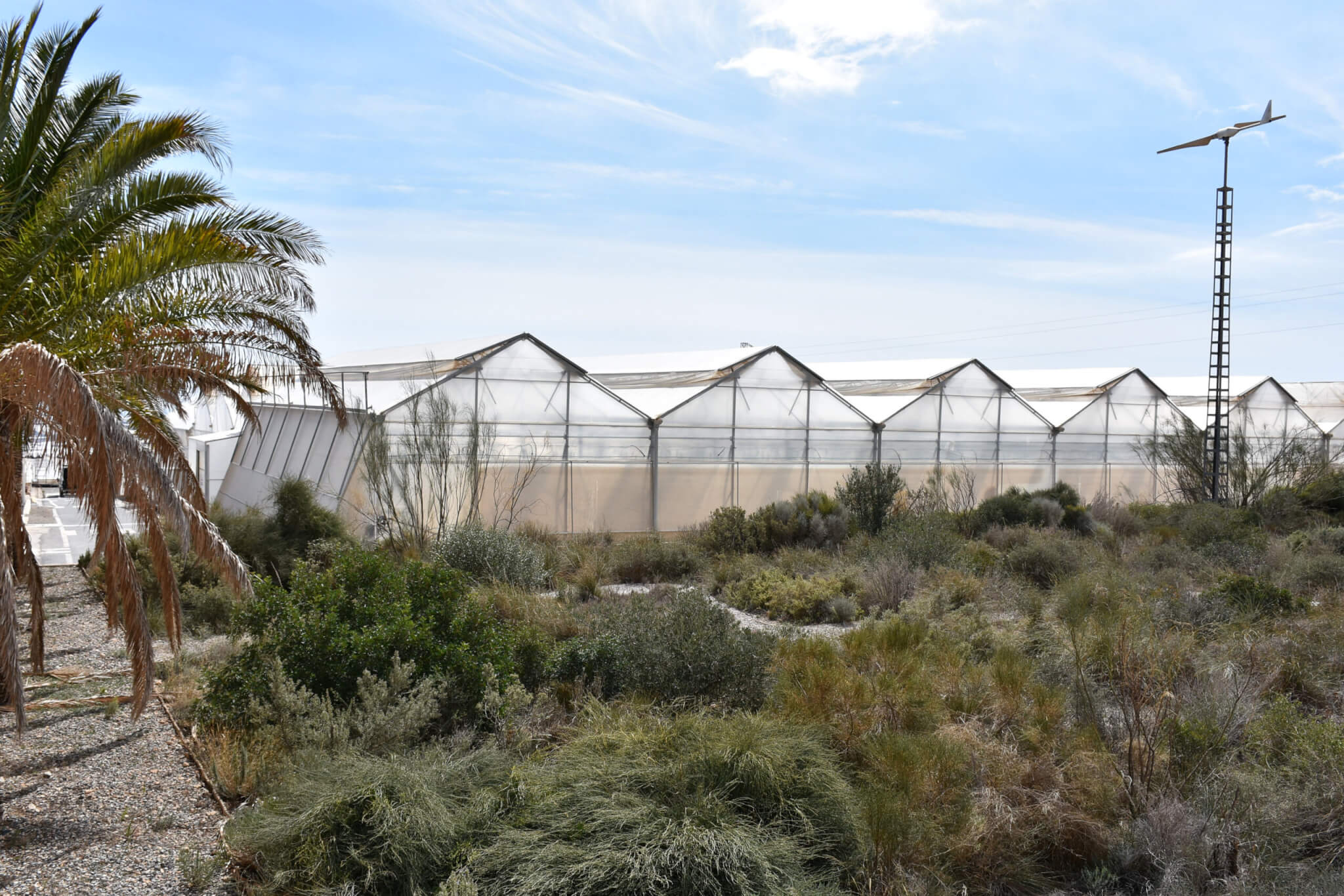![]() This article is part of a new series by Wicked Leeks, Sustainable Cities, exploring what sustainable food means to those living in the city.
This article is part of a new series by Wicked Leeks, Sustainable Cities, exploring what sustainable food means to those living in the city.
Working out whether a restaurant sources sustainable food, respects its staff or recycles its waste can be a minefield – menus give next to nothing away, or if they do use words like regenerative, sustainable or grass-fed, how do you know what it actually means?
While there is no easy answer, we ask green chefs and ethical restaurateurs for their top tips on eating out, what to ask and what to look out for. Got a tip or found a brilliant and sustainable restaurant recently? Share yours below in the comments section.
Tom Hunt, chef and food writer
If you are looking for a sustainable restaurant in a new town or city, I find it helps to consult word of mouth or search online for restaurants serving natural and biodynamic wine. A restaurant with a thoughtful and ecological wine list is bound to care about the quality (and sustainability) of their ingredients. Another way to check a restaurant out is via their Instagram account; if they have a clear focus on ingredients and obvious relationship with their farmers, this is a sure sign of a good menu. However: do beware of unsustainable dishes on otherwise good-looking restaurants. Many supposedly sustainable restaurants still serve seafood from questionable stocks (like wild halibut, eel and king prawns) and some unethical meat products like foie gras.

Geetie Singh-Watson, founder of The Bull Inn, Totnes
I’ll ask specifics, like where is this fish from? The answer will be something like “Brixham”, which tells you nothing. Or “our fishmonger”, which again means nothing. All you can then do is say: “Do you know how it’s caught and from where?” If they don’t, I don’t order it. It’s the same with meat or veg; if the answers are vague, you have to either not order or state your dissatisfaction. The only standard that has any kudos is the Soil Association’s ‘Organic Served Here’, and even that is now diluted to self-declaring (rather than assessment). But asking is still vital. The more people ask, the more they learn. And the more the restaurant will put effort into being informed.

Lewis Glanvill, head chef, The Riverford Field Kitchen
For me, produce is the first thing I look for or notice. Maybe because I spend my time cooking seasonal menus, I feel quite in tune with what’s currently available or what I’m really looking forward to coming in, so asparagus in January on any menu will stick out like a sore thumb. I love a short menu with great ingredients that are in season. Short menus usually mean they’re freshly made and more attention is put into each dish. Massive menus scare me! I think for me it’s less about searching for a restaurant’s sustainability once seated, and much more about visiting a place because I’ve read up or heard about its values and I’m already eating there for those reasons.

Asma Khan, chef and founder of The Darjeeling Express
I look for anything that is in season, because that would mean the food is going to taste fresh, sweet and succulent. I would try to get my information from the menu. For example, if I were in an Indian restaurant, I would not order any vegetable that I knew had been flown in with several air miles attached to it. I would look for information on the farm or the region from which the produce was sourced.

Douglas McMaster, chef and founder of zero waste restaurant Silo, London
If ingredients are labelled as regenerative, or the farms they have been sourced from are named and are small and/or regenerative, then it is most likely sustainable. When you see a breed of fish that you haven’t heard of before, such as dogfish, then this is also likely to be sustainable as not as many people are eating it in comparison to cod. As a top tip, shellfish is very sustainable, so it’s always a good idea to order items such as mussels, oysters or clams.

Peter Weeden, head chef, The Duke of Cambridge, London
A few things I look for are independent restaurants and pubs, as well as Sustainable Restaurant Association or Soil Association-rated eateries. I also look for lots of veg on the menu, plus any name-checking of suppliers/fishers/farmers (if followed up by a knowledgeable server telling you why they use the producer). Super seasonal ingredients like wild garlic are a good sign, while if there’s asparagus and soft fruit in the winter then it’s to avoid. Nose-to-tail use of meat [using the whole carcass and lesser-known cuts] hints that the kitchen valued the tasty bits, and I look out for fish other than the big five (salmon, cod, haddock, tuna and warm water prawns).










Moonfish Cafe in Aberdeen. Brian is a pioneer.
Have you come across EcoCook? Offering guidance and audits to accompany restaurants to obtain sustainable certification – their seal is the first of it’s kind!
Looks really interesting but seems like it only currently covers restaurants in France, Switzerland, Spain and portugal – do you have any experiance of visiting or working in one of their accredited restaurants?